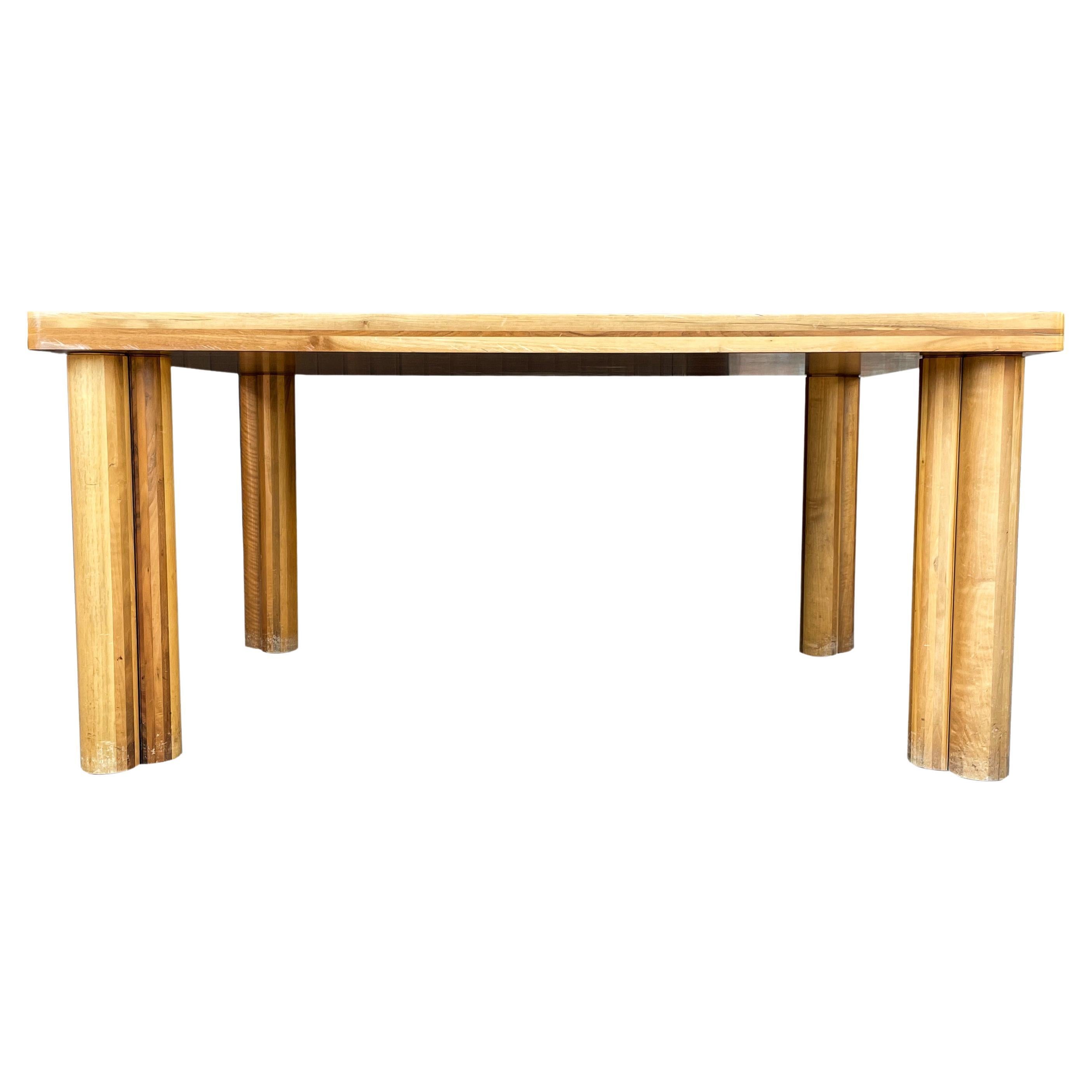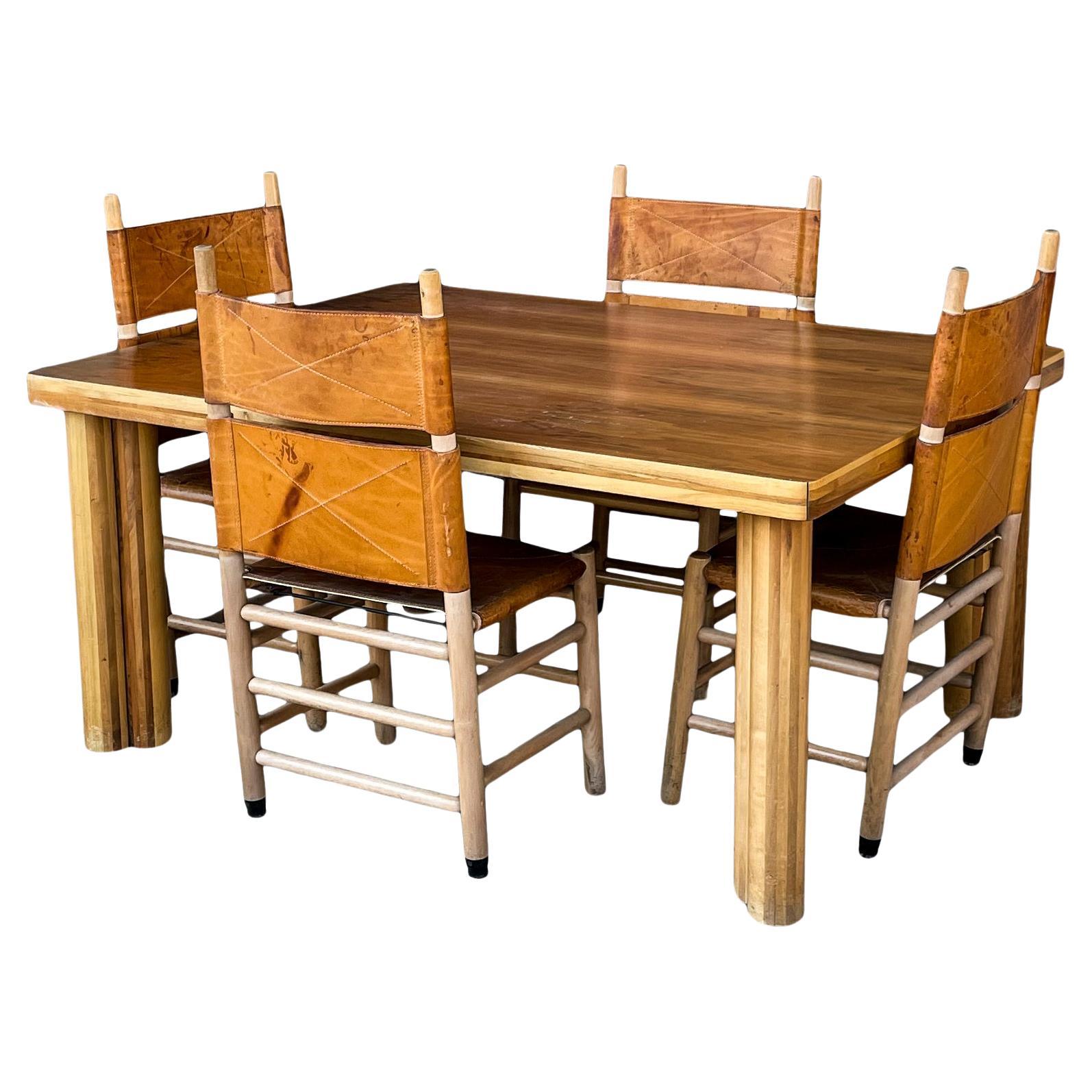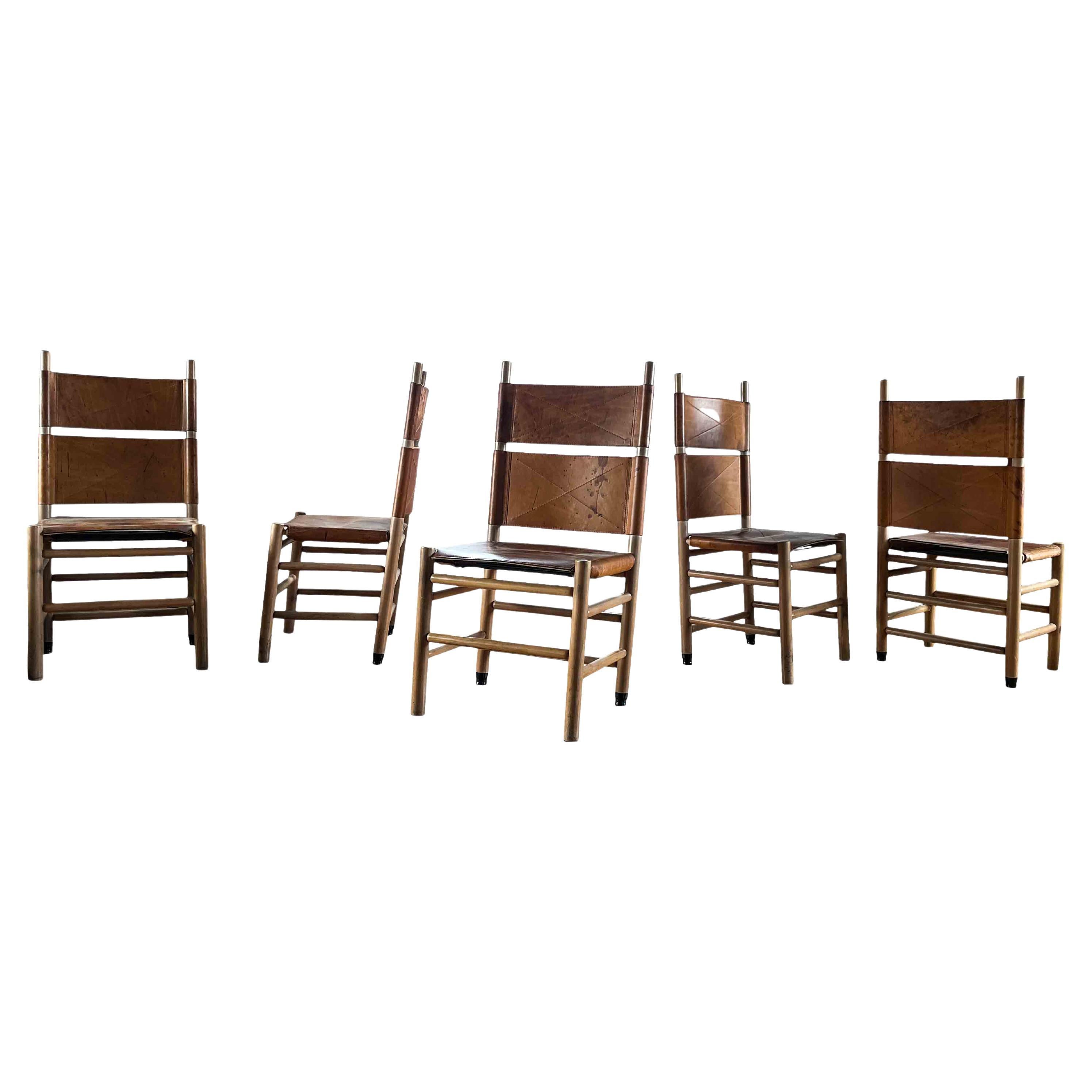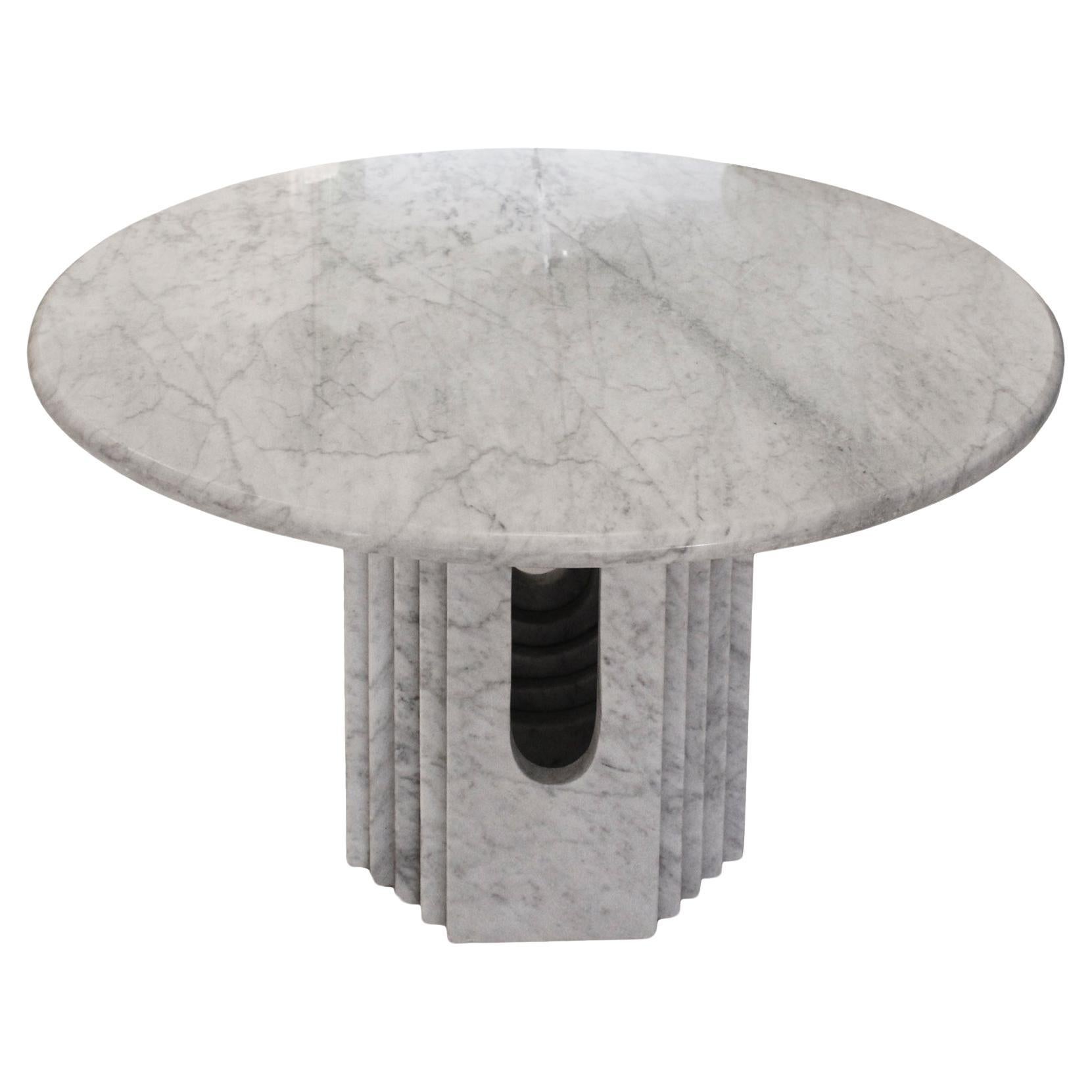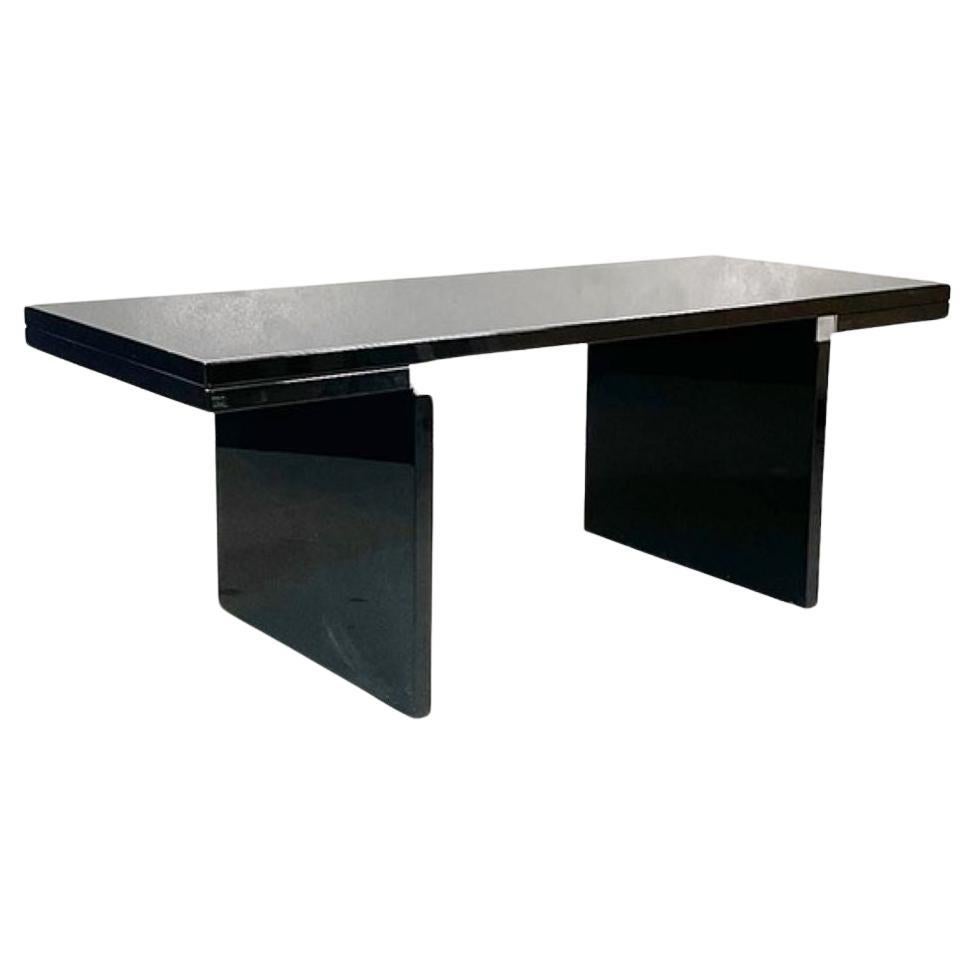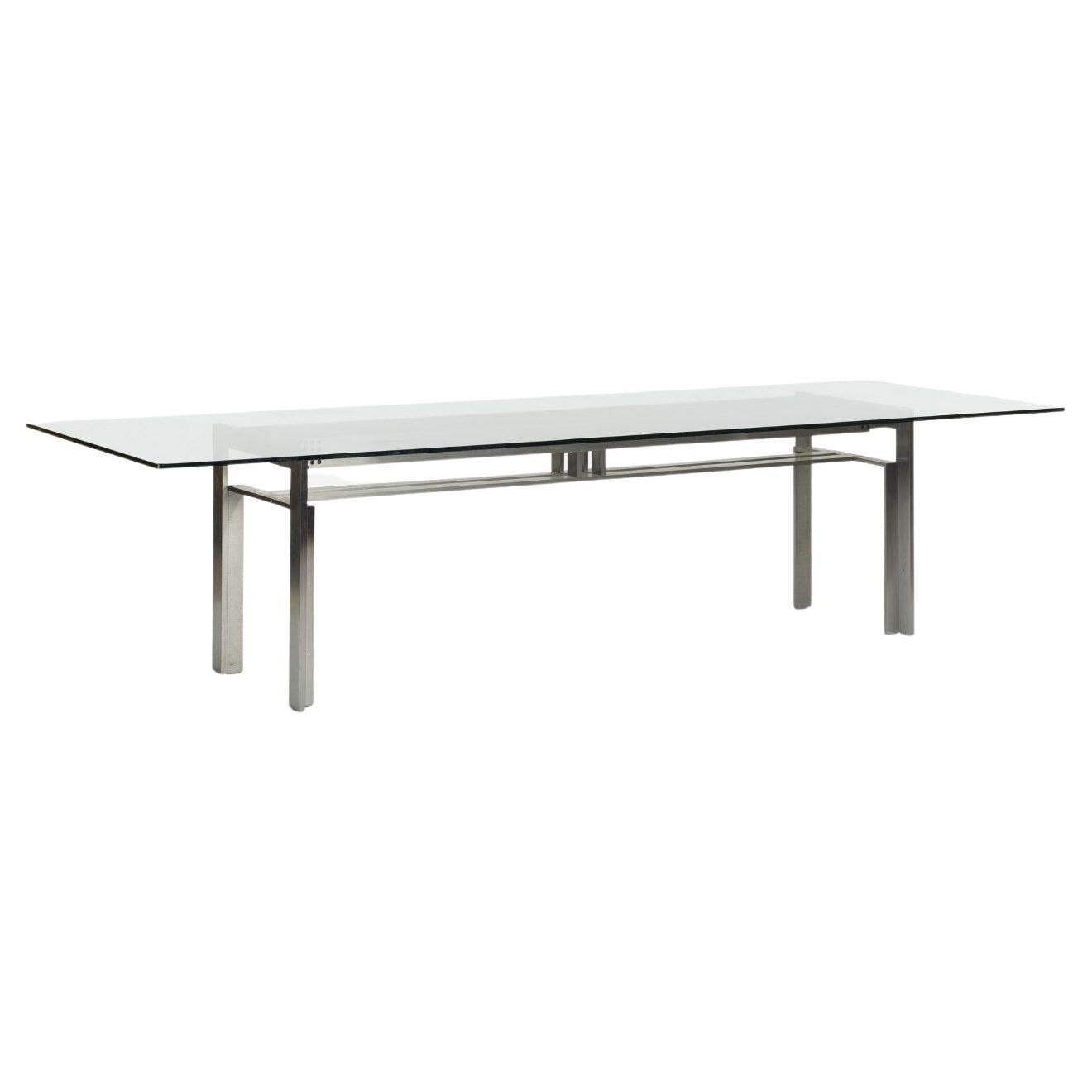Items Similar to Dining table “Scuderia” by Carlo Scarpa for Bernini, 70s, 80s
Want more images or videos?
Request additional images or videos from the seller
1 of 16
Dining table “Scuderia” by Carlo Scarpa for Bernini, 70s, 80s
About the Item
Born in Venice in 1906, Carlo Scarpa studied architecture at the city's Academy of Fine Arts, where he graduated in 1926. He taught architectural drawing at the Academy, where he held several chairs throughout his life, and at the same time began his career as an industrial and interior designer and architect, working for the Venini glass factory in Venice. His most prominent project of the years preceding the Second World War was the restoration of the Faculty of Economics of the University of Venice. In his work Scarpa often reveals that he is influenced by Art Nouveau and masters such as Frank Lloyd Wright and Josef Hoffmann.
Scarpa's architecture is characterized by great attention to the passage of time and continuous change.
He died in 1978 in Japan, and is buried in the Brion complex of the San Vito d'Altivole cemetery (Treviso) - built by him in 1969, and considered by many to be his masterpiece.I
In the history of Italian design, Bernini is an extraordinary and unique experience that draws its foundations directly from the roots of the "know-how" of wood in the Lombardy area since the fifteenth century. An attitude and availability that has produced true design and production excellence that today we can find in museums and collections all over the world.
- Creator:Carlo Scarpa (Designer),Bernini (Manufacturer)
- Dimensions:Height: 28.75 in (73 cm)Width: 51.19 in (130 cm)Depth: 51.19 in (130 cm)
- Style:Mid-Century Modern (Of the Period)
- Materials and Techniques:
- Place of Origin:
- Period:
- Date of Manufacture:1970s
- Condition:Wear consistent with age and use.
- Seller Location:Padova, IT
- Reference Number:1stDibs: LU6345237432292
About the Seller
5.0
Vetted Seller
These experienced sellers undergo a comprehensive evaluation by our team of in-house experts.
Established in 2015
1stDibs seller since 2022
41 sales on 1stDibs
Typical response time: 10 hours
- ShippingRetrieving quote...Ships From: Albignasego, Italy
- Return PolicyA return for this item may be initiated within 14 days of delivery.
More From This SellerView All
- Round table glass top and metal frame in the style of Carlo Scarpa 70sBy Carlo ScarpaLocated in Padova, ITDesign in the style of Carlo Scarpa Drawn metal structure and glass top Dimensions: Diameter 120 cm - H 74 cm - weight 70 kg CONDITION: very good with small and inevitable signs of a...Category
Vintage 1970s Italian Mid-Century Modern Dining Room Tables
MaterialsMetal
- Kazuhide Takahama for Simon Cassina 70s, Antella Console TableBy Kazuhide Takahama, Simon InternationalLocated in Padova, ITThis demi lune console table, designed by Kazuhide Takahama in 1975 for Simon, cn be transformed in an elliptical dining table.. Its essential design makes Antella a timeless class...Category
Vintage 1970s Italian Mid-Century Modern Console Tables
MaterialsWood
- Square Walnut Table Model 781 by Vico Magistretti for Cassina, 60s , 70sBy Cassina, Vico MagistrettiLocated in Padova, ITSquare walnut table model 781 by Vico Magistretti for Cassina 60s , 70s. Superb table in solid walnut, top in dark brown aniline. Cassina Spa is ...Category
Vintage 1960s Italian Mid-Century Modern Dining Room Tables
MaterialsWalnut
- Pair of Folding Chairs Celestina 70s, 80s by Marco Zanuso for Zanotta, ItalyBy Marco Zanuso, ZanottaLocated in Padova, IT2 Celestina chairs by Marco Zanuso for Zanotta, 1978, 1990s. Famous leather folding chairs with a high quality finish. Marco Zanuso (Milan, May 14, 19...Category
Vintage 1970s Italian Mid-Century Modern Chairs
MaterialsMetal
- Floor lamp Papillona by Tobia Scarpa for Flos 70sBy Tobia Scarpa, FlosLocated in Padova, ITFlos Papillona is a floor lamp with a simple and modern design. Designed by Tobia Scarpa in 1975, it is a classic from those memorable years which saw t...Category
Vintage 1970s Italian Mid-Century Modern Floor Lamps
MaterialsMetal
- Vanessa metal bed by Tobia Scarpa for Gavina 70sBy Tobia Scarpa, GavinaLocated in Padova, ITBorn in Venice in 1935, Tobia Scarpa is the son of the famous architect Carlo Scarpa. Together with his wife Afra, Tobia began working in the Venini glass factory in Murano in the 19...Category
Vintage 1970s Italian Mid-Century Modern Beds and Bed Frames
MaterialsMetal
You May Also Like
- Carlo Scarpa Mid-Century Brown Walnut “Scuderia” Dining Table for Bernini, 1977By Carlo Scarpa, BerniniLocated in Vicenza, IT“Scuderia” dining table, designed by Carlo Scarpa and produced by the Italian manufacturer Bernini in 1977. Originally, Carlo Scarpa designed the table to restore the stable of Villa Valmarana in Vicenza in 1972. The table features a solid walnut structure. Available also five “Kentucky” dining...Category
Vintage 1970s Italian Mid-Century Modern Dining Room Tables
MaterialsWalnut
- Carlo Scarpa Walnut and Leather "Scuderia" Dining Room Set for Bernini, 1977By Carlo Scarpa, BerniniLocated in Vicenza, ITScuderia dining room set, designed by Carlo Scarpa for the Italian manufacturer Bernini in 1977. Composed of 5 mod. 783 “Kentucky” dining chairs...Category
Vintage 1970s Italian Mid-Century Modern Dining Room Tables
MaterialsLeather, Plastic, Walnut
- Carlo Scarpa Cognac Leather “Kentucky” Dining Chair for Bernini, 1977, Set of 5By Carlo Scarpa, BerniniLocated in Vicenza, ITSet of 5 mod. 783 “Kentucky” dining chairs, designed by Carlo Scarpa for the Italian manufacturer Bernini in 1977. Structure made from oak and walnut timber. Seats and backrest made from cognac leather. Excellent vintage condition. Carlo Scarpa designed this chair for the “Scuderia” series., the last project he made for Bernini. The architect took inspiration from the “shaker” movement. He designed the chair slightly inclined at the front. This feature allows you to swing backward (until you lean on a wall) and remain in balance. Born in Venice on June 2nd, 1906, Carlo Scarpa began working at a very early age. A year after he had first qualified as an architect in 1926, he began working for the Murano glassmakers Cappellin & Co. in a consultative capacity. From 1927, Carlo Scarpa began to experiment with the Murano glass, and this research not only gave him excellent results here but would also inform his progress for many years to come. Between 1935 and 1937, as he entered his thirties, Carlo Scarpa accepted his first important commission, the renovation of Venice’s Cà Foscari. He adapted the spaces of this stately University building that stands on the Grand Canal banks, creating rooms for the Dean’s offices and a new hall for academic ceremonies; Mario Sironi and Mario De Luigi were charged with doing the restoration work on the frescos. After 1945, Carlo Scarpa found himself constantly busy with new commissions, including various furnishings and designs for the renovation of Venice’s Hotel Bauer and designing a tall building in Padua and a residential area in Feltre, all worth mentioning. One of his key works, despite its relatively modest diminished proportions, was the [bookshop known as the] Padiglione del Libro, which stands in Venice’s Giardini di Castello and clearly shows Scarpa’s passion for the works of Frank Lloyd Wright. In the years which were to follow, after he had met the American architect, Scarpa repeated similar experiments on other occasions, as can be seen, in particular, in the sketches he drew up in 1953 for villa Zoppas in Conegliano, which show some of his most promising work. However, this work unfortunately never came to fruition. Carlo Scarpa later created three museum layouts to prove pivotal in terms of how twentieth-century museums were set up from then on. Between 1955 and 1957, he completed extension work on Treviso’s Gipsoteca Canoviana [the museum that houses Canova’s sculptures] in Possagno, taking a similar experimental approach to the one he used for the Venezuelan Pavilion at [Venice’s] Giardini di Castello which he was building at the same time (1954-56). In Possagno Carlo Scarpa was to create one of his most significant ever works, which inevitably bears comparison with two other museum layouts that he was working on over the same period, those of: – Galleria Nazionale di Sicilia, housed in the Palazzo Abatellis in Palermo (1953-55) – Castelvecchio in Verona (1957- 1974), all of which were highly acclaimed, adding to his growing fame. Two other buildings, which are beautifully arranged in spatial terms, can be added to this long list of key works that were started and, in some cases, even completed during the nineteen fifties. After winning the Olivetti award for architecture in 1956, Scarpa began work in Venice’s Piazza San Marco on an area destined to house products made by the Industrial manufacturers Ivrea. Over the same period (1959-1963), he also worked on the renovation and restoration of the gardens and ground floor of the Fondazione Querini Stampalia in Venice, which many consider one of his greatest works. While he busied himself working on-site at the Fondazione Querini Stampalia, Carlo Scarpa also began work building a villa in Udine for the Veritti family. To shed some light on the extent to which his work evolved over the years, it may perhaps be useful to compare this work with that of his very last building, villa Ottolenghi Bardolino, which was near to completion at the time of his sudden death in 1978. Upon completion of villa Veritti over the next ten years, without ever letting up on his work on renovation and layouts, Scarpa accepted some highly challenging commissions, working on the Carlo Felice Theatre in Genoa and another theatre in Vicenza. Towards the end of this decade, in 1969, Rina Brion commissioned Carlo Scarpa to build the Brion Mausoleum in San Vito d’Altivole (Treviso), a piece he continued to work on right up until the moment of his death. Nevertheless, even though he was totally absorbed by work on this mausoleum, there are plenty of other episodes which can offer some insight into the final years of his career. As work on the San Vito d’Altivole Mausoleum began to lessen from 1973, Carlo Scarpa started building the new headquarters for the Banca Popolare di Verona. He drew up plans that were surprisingly different from the work he was carrying out at the same time on the villa Ottolenghi. However, the plans Carlo Scarpa drew up, at different times, for a monument in Brescia’s Piazza della Loggia commemorating victims of the terrorist attack on May 28th, 1974, make a sharp contrast to the work he carried out in Verona, almost as if there is a certain hesitation after so many mannered excesses. The same Pietas that informs his designs for the Piazza Della Loggia can also be seen in the presence of the water that flows through the Brion Mausoleum, almost as if to give a concrete manifestation of pity in this twentieth-century work of art. Carlo Scarpa has put together a highly sophisticated collection of structures, occupying the mausoleum’s L-shaped space stretching across both sides of the old San Vito d’Altivole cemetery. A myriad of different forms and an equally large number of different pieces, all of which are separate and yet inextricably linked to form a chain that seems to offer no promise of continuity, rising up out of these are those whose only justification for being there is to bear the warning “si vis vitam, para mortem,” [if you wish to experience life prepare for death] as if to tell a tale that suggests the circle of time, joining together the commemoration of the dead with a celebration of life. At the entrance of the Brion Mausoleum stand the “propylaea” followed by a cloister which ends by a small chapel, with an arcosolium bearing the family sarcophagi, the main pavilion, held in place on broken cast iron supports, stands over a mirror-shaped stretch of water and occupies one end of the family’s burial space. The musical sound of the walkways teamed with the luminosity of these harmoniously blended spaces shows how, in keeping with his strong sense of vision, Carlo Scarpa could make the most of all of his many skills to come up with this truly magnificent space. As well as a great commitment to architectural work, with the many projects which we have already seen punctuating his career, Carlo Scarpa also made many equally important forays into the world of applied arts. Between 1926 and 1931, he worked for the Murano glassmakers Cappellin, later taking what he had learned with him when he went to work for the glassmakers Venini from 1933 until the 1950s. The story of how he came to work on furniture design is different, however, and began with the furniture he designed to replace lost furnishings during his renovation of Cà Foscari. The later mass-produced furniture started differently, given that many pieces were originally one-off designs “made to measure.” Industrial manufacturing using these designs as prototypes came into being thanks to the continuity afforded him by Dino Gavina, who, as well as this, also invited Carlo Scarpa to become president of the company Gavina SpA, later to become SIMON, a company Gavina founded eight years on, in partnership with Maria Simoncini (whose own name accounts for the choice of company name). Carlo Scarpa and Gavina forged a strong bond in 1968 as they began to put various models of his into production for Simon, such as the “Doge” table, which also formed the basis for the “Sarpi” and “Florian” tables. In the early seventies, other tables that followed included “Valmarana,” “Quatour,” and “Orseolo.” While in 1974, they added couch and armchair “Cornaro” to the collection and the “Toledo” bed...Category
Vintage 1970s Italian Mid-Century Modern Dining Room Tables
MaterialsWalnut, Leather, Plastic
- Round Marble Table designed by Carlo Scarpa for Cattelan, Italy 70sBy Carlo ScarpaLocated in Madrid, ESPostmodernist pedestal table with Carrara marble sculpture base designed by Carlo Scarpa for Cattelan in Italy, 1970s. Measurements: Diameter 117 x H 73 cm Alberto Carlo Scarpa was...Category
Vintage 1970s Italian Mid-Century Modern Dining Room Tables
MaterialsMarble
- "Orseolo" Black Table by Carlo Scarpa for Simon Gavina, Italy 70sBy Carlo Scarpa, Simon Gavina EditionsLocated in Sacile, PNCarlo Scarpa "Orseolo" black table for Simon, 1972. Table, polyester varnished with mirror polished finish, made for the assembly of thick, elementary geometric panels with satin-fi...Category
Vintage 1970s Italian Mid-Century Modern Dining Room Tables
MaterialsWood
- Carlo Scarpa for Cassina - Doge Dining TableBy Cassina, Carlo ScarpaLocated in Zagreb, HRDoge table in glass and steel, designed in 1968 by one of the most influential Italian architects and designers Carlo Scarpa for the great Italian visionary Dino Gavina and his compa...Category
Vintage 1970s Italian Mid-Century Modern Dining Room Tables
MaterialsSteel, Brass
Recently Viewed
View AllMore Ways To Browse
Danish Teak Rosewood Dining Table
Round Wood Octagon Dining Table
Saw Back Table
Wood Edge Dining Table
Wegner Rosewood Table
Oval Breakfast Table Glass Top
Wegner At319
Leighton Hall Dining Table Round Leaf Rosewood
Art Deco Rosewood Pedestal Dining Table
Black Oval Mangiarotti Table
Gustavian Breakfast Table
Spanish 18th Century Walnut Dining Chairs
Round Tulip Marble Dining Table
Pierre Cardin Cage
72 Inch Round Satinwood Dining Table
Arne Vodder Round Dining
Birchwood Dining Table
90 Parsons Table
